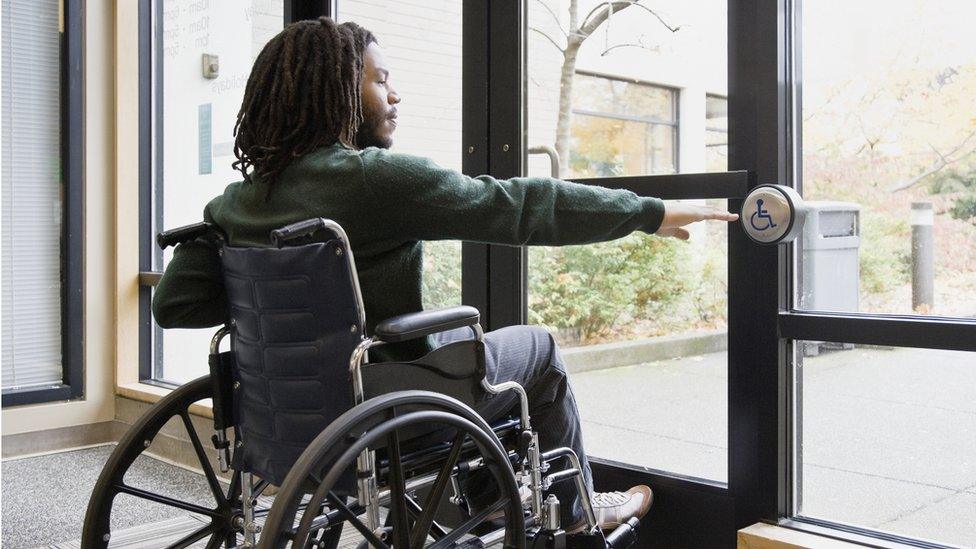South Korea: 'Protesting for 20 years and still no equal rights'
- Published
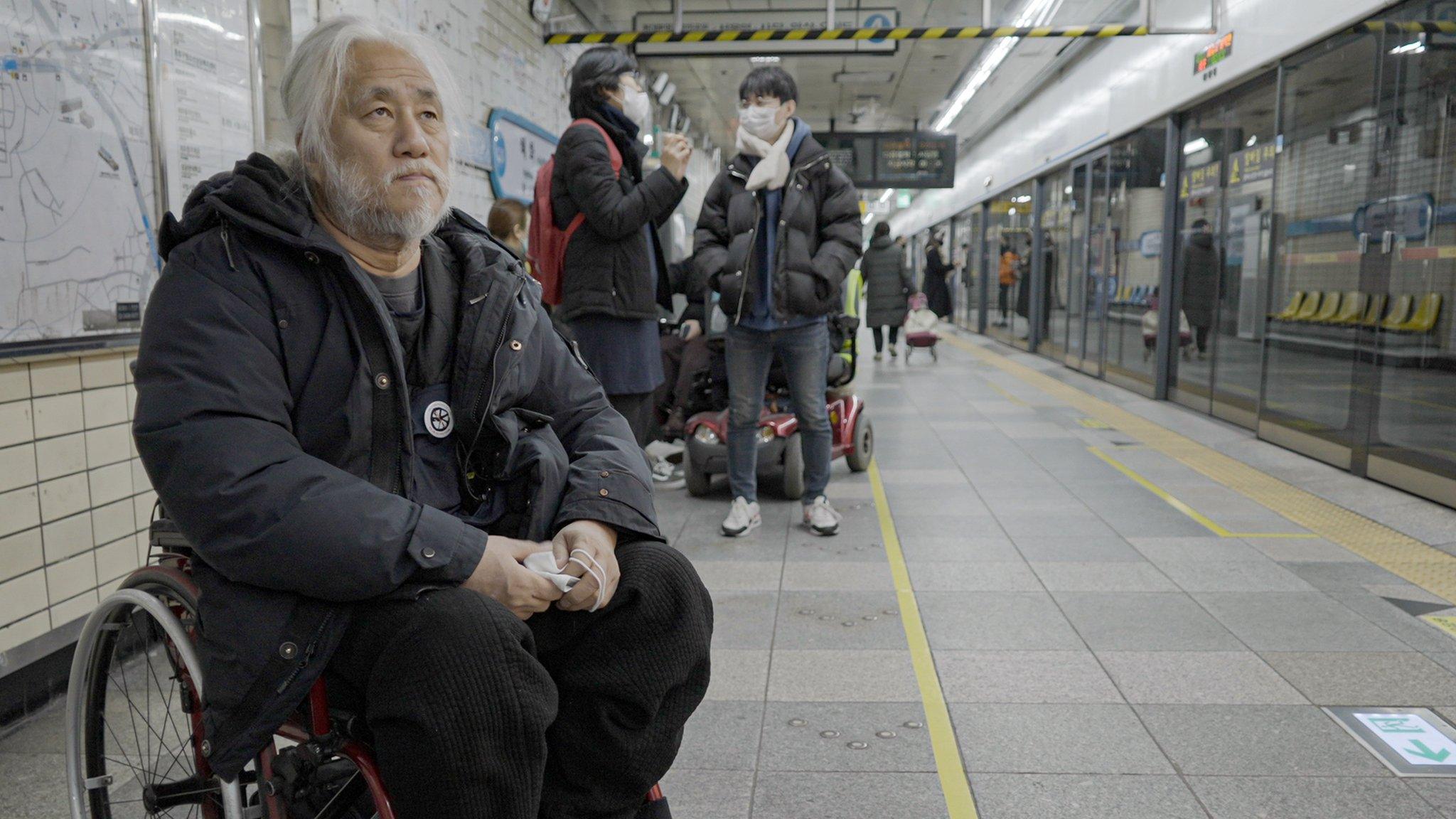
Park Kyoung-seok says there aren't many places in Seoul he can access as a wheelchair user
In his neighbourhood in Seoul, there aren't many places Park Kyoung-seok can visit in his wheelchair.
"I can't go to the theatre because of the steps. I can't go to the convenience store or the new café that's just opened for the same reason," he says.
"Even when I do get in somewhere, there is the problem of the bathroom. Most of the time I can't use it."
But things get worse when he tries to leave his neighbourhood. Public transport in South Korea, Kyoung-seok says, is not designed for disabled people: "A normal journey can take twice or three times as long for a disabled person, compared to a non-disabled person."
Kyoung-seok was involved in a hang-gliding accident in 1984, making him paraplegic at the age of 24. He has been fighting for equal access to public transport for a long time - he is now the face of disability rights in South Korea, where he leads the group Solidarity Against Disability Discrimination (SADD).
Now, the battle he has been waging for years is playing out on Seoul's subway platforms.

Seoul's subway stations have become an unlikely battleground for disability rights
For the past year, Kyoung-seok and fellow activists have been protesting during the morning rush hour, blocking entry to the trains and disrupting major lines. Many activists, like him, are senior citizens.
They say they are tired of being denied access to parts of the system. They want a huge increase in funding for mobility provisions - and a key demand is the installation of lifts at all stations to make the entire network accessible for wheelchair users.
On the surface the clash is about infrastructure and public spending, but the problem runs deeper. To many observers, it's a reflection of South Korean attitudes towards disability.
"I've been hit by commuters, I've been followed home. Sometimes people shout at us," says Lee Hyung-sook, a demonstrator who has been using a wheelchair since developing polio as a three-year-old.
"They say, 'why don't you just stay at home?' It can get quite scary, but we need to continue so that regular citizens understand our situation. The gap between the rights of disabled and non-disabled people here is huge."
Sympathy among commuters, however, appeared to be in short supply.
"Why do they cause harm to innocent citizens?" asked an elderly lady who'd missed a hospital appointment. "I think what they are doing is wrong."
Another commuter gestured around the station at nothing in particular and said: "Look at all these facilities that disabled people already have. I agree with the police."
Two other young women on their way home from work agreed that while protesting was fine, causing problems for others was not acceptable.
But Kyoung-seok says he and his fellow activists will not stop. "I understand this is a frustrating situation for commuters. But we've been shouting like this for over 20 years and we still haven't got the same rights," he says.
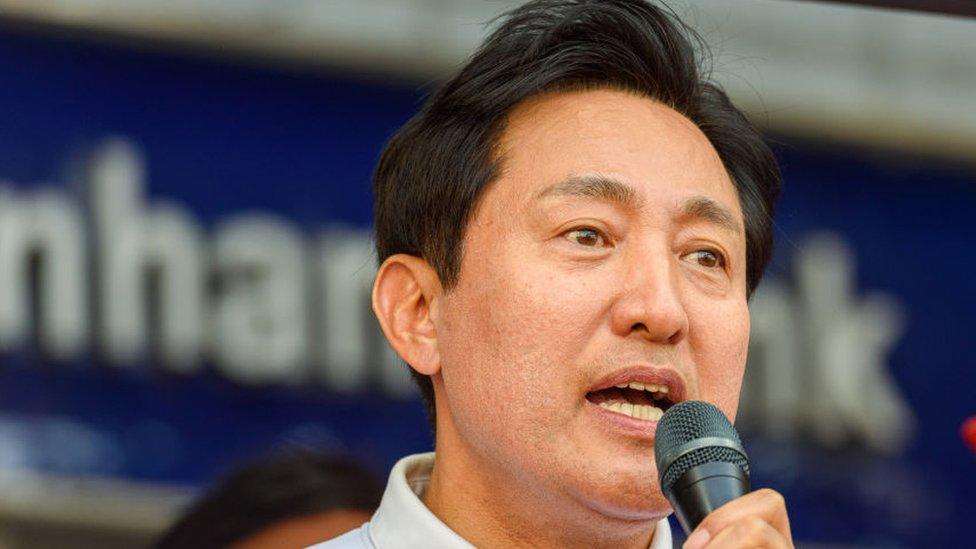
The mayor of Seoul says he can no longer overlook the inconvenience caused by the protesters
Seoul's mayor, Oh Se-hoon, has vowed "zero tolerance" towards the protests. In a Facebook post, he wrote, "I can no longer overlook the damage and inconvenience inflicted on ordinary citizens."
Disabled protesters say the language used by the mayor proves their point: they are not considered "ordinary citizens", they say.
The installation of lifts at all stations, and how quickly that will happen, is one of the key sticking points in negotiations. Currently, only 19 out of 275 stations in the city (7%) are without lift access, according to Seoul Metro. This compares favourably to London's Underground, where 69% of the stations are inaccessible. In New York, it's 71%.
Government figures also show spending on mobility provisions in South Korea has more than doubled this year, but the two sides are still miles apart when it comes to agreeing on what is an appropriate increase.
But activists say it's not just about the numbers - they say the hard line approach taken by authorities reveals the misconceptions surrounding disability in South Korea.
"A lot of people in South Korea think disabled people live comfortably on welfare. Someone once told me they live better than the president," says Hong Yunhui, whose teenage daughter Jimin has used a wheelchair since recovering from cancer as a four-year-old.
She fears the protests are being used to villainise disabled people.
"We've seen people, especially older people, tap my daughter on the shoulder and ask things like the price of her wheelchair. They say she's so lucky to have our great welfare system in Korea, paid for by their taxes."
In 2015, Yunhui founded Muui, a social venture whose underlying message is that disability should not define a person. Muui's tagline: "Making disability sexy".
Yunhui and Jimin create interactive maps that show accessibility across Seoul. They are hugely popular and, so far, they have made more than 1,000 maps that include dozens of stations.
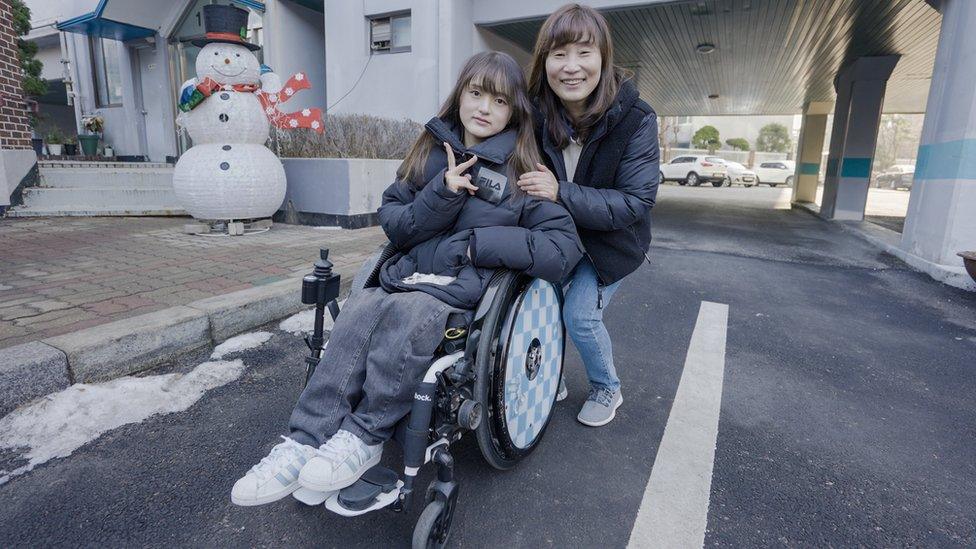
Jimin and her mother make interactive maps to help people with disabilities
At 17, Jimin belongs to a different generation to those protesting at subway stations, but she credits them for having forced a conversation about disability.
"In South Korean society right now, you don't see disabled people enough," she says. "Our life has always been stuck at home. We give up on going to places even if we really want to go. [But] we want to show the world that we exist."
Jimin vlogs, writes and posts on social media about being a young disabled woman in South Korea.
"In South Korea being a woman is difficult, being disabled is difficult and being a minor is difficult," says Jimin. "Recently, I realised I'm all three. Does that make me the lowest class in Korea?"
"At first it made me feel very lonely, but now I think there's no reason to be. Doing this kind of work and getting a good response from people makes me optimistic about the future."
Additional reporting by Jongwook Hong and Hosu Lee.
Related topics
- Published7 September 2022

- Published23 September 2022
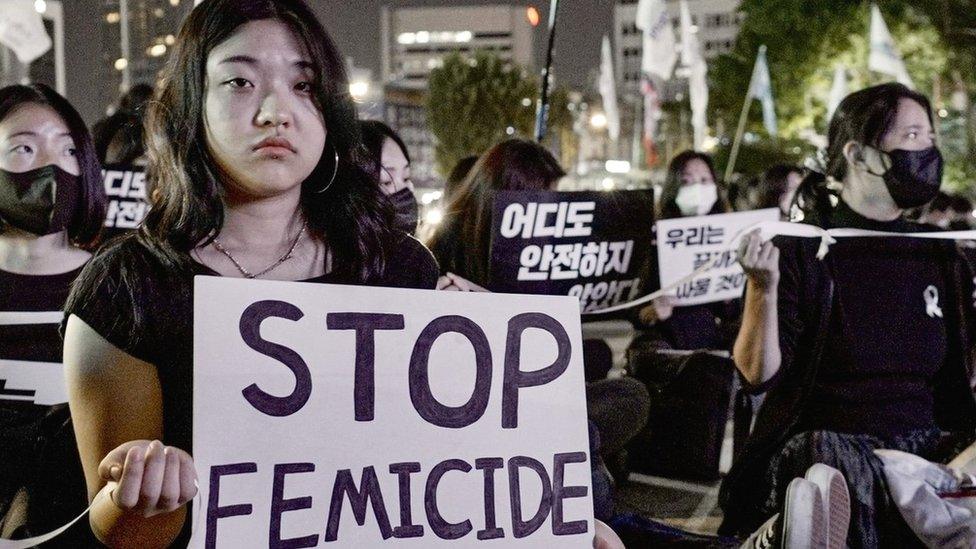
- Published3 December 2022
